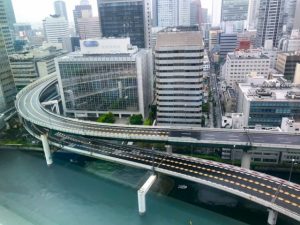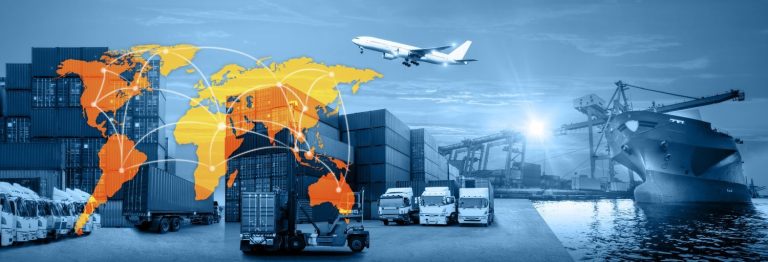It was intense heat exceeding 35 degrees Celsius every day in various areas in Japan until last week. This week, after the terrific typhoon No.10 which was born on the south sea of Japan on Sep.4th (Fri) with its central atmospheric pressure of 915hPa maximum instantaneous wind speed of 70m/s headed north from Okinawa by covering the almost whole Kyusyu area, and then ran through the Korean Peninsula on Sep. 7th (Mon), and there is a feeling the heat has let up a bit. I was scared of the damage by the typhoon which was forecasted to be the strongest in the past, but now relieved that there was relatively small damage maybe because we were well prepared for the coming typhoon. However, I cannot but sympathize with the people in the Okinawa and Kyushu areas where the typhoon passed by.
 Under the circumstances, the announcement of how many people are infected with the new coronavirus (COVID-19) in various places sounds somewhat empty. Have we got used to the name of the new coronavirus? Do we start thinking that it has nothing to do with our life? Has it become part of our life? Nowadays, I am wearing a mask, avoiding 3Cs (closed spaces/ crowded places/close-contact settings), gargling, washing hands, disinfecting with alcohol, and maintaining a regular life including good sleep, well-balanced diet, and moderate exercise to keep in good health. Taking “the unusual” as “the usual”, I defend myself with my own way of corona countermeasures, feeling some inconvenience though.
Under the circumstances, the announcement of how many people are infected with the new coronavirus (COVID-19) in various places sounds somewhat empty. Have we got used to the name of the new coronavirus? Do we start thinking that it has nothing to do with our life? Has it become part of our life? Nowadays, I am wearing a mask, avoiding 3Cs (closed spaces/ crowded places/close-contact settings), gargling, washing hands, disinfecting with alcohol, and maintaining a regular life including good sleep, well-balanced diet, and moderate exercise to keep in good health. Taking “the unusual” as “the usual”, I defend myself with my own way of corona countermeasures, feeling some inconvenience though.
The movement of people disappeared instantly inside and outside the country due to the lockdown. It’s the first event in at least some 70 years in my life. With the exception of the minimum actions essential to maintain our lives, we have had no choice but to stop economic activities. Domestic and overseas travel, business trips by airplanes, railroads, buses, taxis, rental car transportation, hotels, inns, daily dining halls, restaurants, taverns, and service industries such as bars, clubs, cabarets, all of them were affected. In turn, it affected the market sales of marine and agricultural products in the primary industry, and led to a decline in the automobile, home appliances, real estate and construction industries in the secondary industry. The cycle has been stagnant or has stopped. This situation makes it complicated because it affects employment issues.
The reality is that this is happening all over the world. Moreover, it has caused a lot of disruption to the globalized supply chain. On the other hand, the spread of new coronavirus infection has not stopped. However, about 40 to 80% of the infected people in each country has already recovered.
Each country is trying to resume its economic activities with its own policies. The method differs depending on the circumstances of each country. The spread of COVID-19 seems to have calmed down in developed countries. But the United States is an exception. It seems China is controlling COVID-19 well based on the experience of SARS that occurred in 2002 and they resumed economic activities much earlier than any other countries.
Trade is now growing between the United States and China while they are at the opposite poles in terms of COVID-19 situation. In the US, after lockdown was lifted, the consumption and production system has recovered, product shortages have occurred, and September is the month when traditional Christmas products are stocked up. And the rush demand before national holidays in China observing the National Day which begins in October is also activating the export from China to North America and Europe.
Thus, shipping companies and alliances increased their vessel capacity on the Asia-North America route to 500,000 TEU per week in September. It increased by 26%, and 17.6% for Asia-Europe route compared to this May. However, the container freight is still soaring up. Until then, all shipping companies and alliances have been trying to maintain the freight level by void sailing programs in response to the decrease in cargo movement during COVID-19.
40f freight for the east coast of North America on September 8th was $4,538, an increase of $330 from the previous week. It exceeded $4,500 ever since March 2015. For the West Coast of North America, it increased by $119 from the previous week to $3,758. It’s record high in 4 consecutive weeks from mid-August. 20f freight for Northern Europe is $1,042, and $1,082 for the Mediterranean. Both prices have risen by $10 to $20 from the previous week. Freight for Northern Europe and Mediterranean exceeded $1,000 since January 17th. 40f freight for South America is $5,000, which was $3,000 half a year ago.
The significant shortage of containers in China and Asia is contributing to the increase in ocean freight. The reduction of operating ships by the shipping companies and alliances to date has caused container congestion in North America and Europe. They are making efforts to empty positioning of those containers to Asia, but anticipating a slowdown in cargo movements after October, shipping companies and alliances are still trying to keep ocean freight in a certain level by void sailing programs. If they continue to do the past behavior, all shipping companies will collapse together. Distributing ships in accordance with the balance between supply and demand is the key to stabilizing ocean freight levels.
At the end of August, the price of new container is $2,100 per 20f. The inventory of new containers in China container factory is 604,492TEU (Dry: 552,840TEU, Reefer: 51,652TEU). The stock of new DRY containers in China factory decreased by 277,545 TEU from 830,385 TEU in July, and all of the balance inventory of 552,840 TEU is reported as reserved for L/T by the shipping lines. The demand in August and September in China is extraordinary, and containers are being empty positioned from Japan to China to meet the demand there. Ocean Network Express (ONE) is expected to have pretty good business results for the second quarter.

